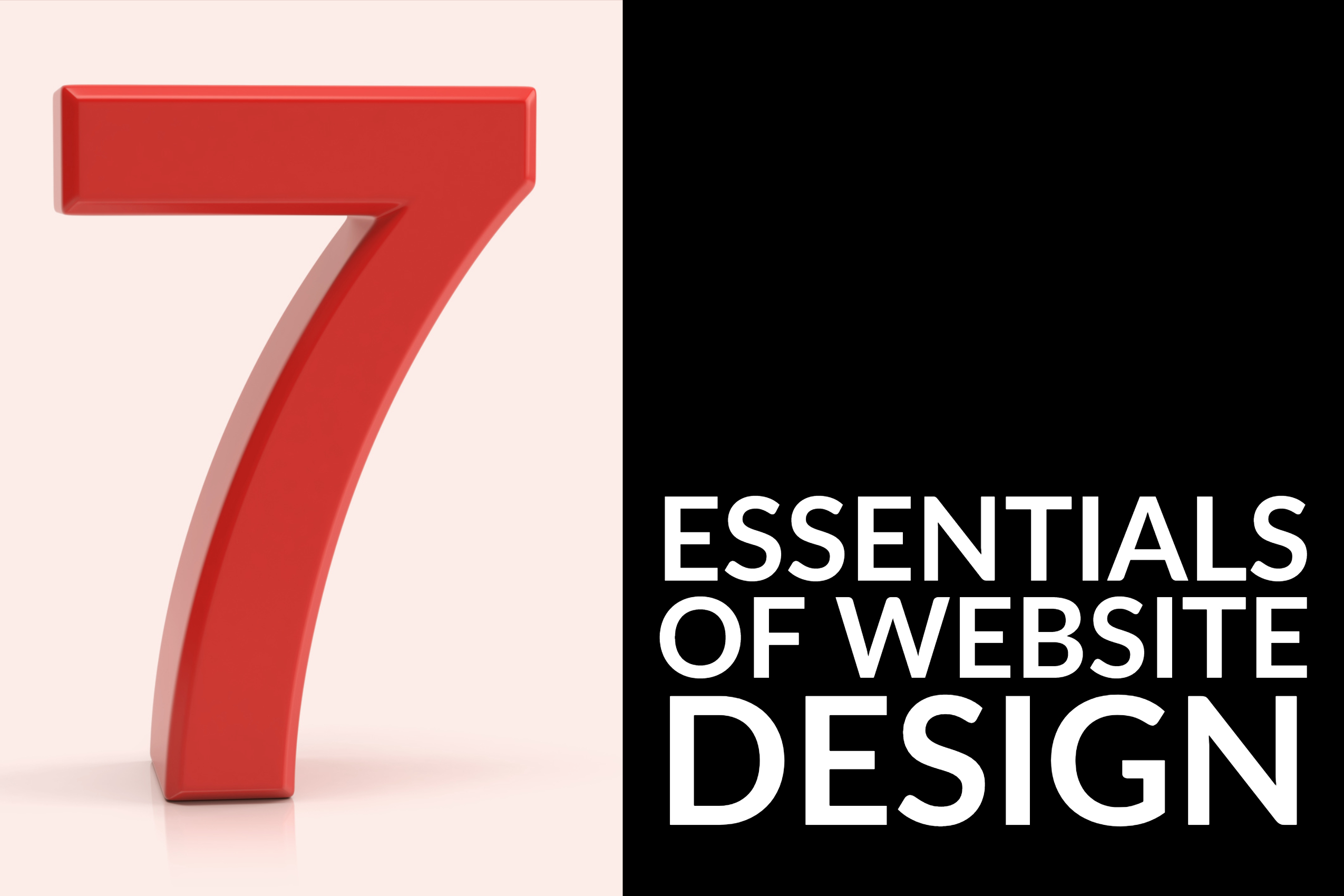7 Essentials of Website Design

Creating a successful business website requires blending together elements that touch on all aspects of marketing, design and public relations. It requires a multi-faceted approach that takes in the big picture while also focusing on the little details.
Here are 7 “big picture” elements to keep in mind and some tips and links for getting the details right as well.
1. Outstanding aesthetics
First impressions matter, and if your website isn’t visually pleasing from the time visitors first encounter it, they aren’t likely to stick around. Design elements such as images, color variation, white space, headline hierarchy and others should create a natural path for the eyes to follow, set a tone for your website and make it easy for visitors to understand what their next step should be.
Avoid clutter, chaos and discordant elements that create a negative impression.
2. Quality content and information
While the visual impact of your website is the initial hook to keep visitors there long enough to look around, in order to keep them on your site long enough to learn about your products or service, or to possibly convert as a lead or customer, you need to provide quality content that visitors believe they can trust.
Give visitors the information they want and need, not the hyperbole of a used car salesman.
Quality content can be in the form of website pages that detail your services and products and how they help your customer solve problems; blog posts that educate, inspire or entertain; a resource library full of useful checklists and videos; or a well-written FAQs page. In all of the content found on your website, from headlines to contact pages, consider these criteria:
-
Does it tell a story or have character?
-
Does it solve a problem?
-
Is it useful?
-
Is it reliable?
Make sure visitors to your website find information they can trust.
3. Recognizability (fits the brand)
Website design should be a key element in any brand positioning plan, and your current brand positioning strategy should be used to guide website development or redevelopment. Your website should be easily identified at a glance as yours.
That means not only using the same brand imaging (logos, fonts, colors) as on other marketing materials, but ensuring that the tone and approach taken reflect your larger brand position. If your brand image is traditional, conservative and steady, using every new gimmick or an edgy design on your website may turn visitors away or cause them to question your reliability.
On the other hand, if you serve arts, entertainment or entrepreneurial audiences that are tuned into everything new, be sure to give them what they are looking for.
4. Usability (easy to navigate, mobile optimized)
I started this list with a few items that speak large to form — but don’t let form cause you to lose function. Hiding menus under roll-over images or going completely minimal in your approach may give your website a clean look, but it makes it difficult for users to find the information they need. And poor navigation is one of the key reasons website visitors bounce. (Source)
Your website also needs to easy to use on a wide range of devices. While some audiences are still accessing information on traditional laptop or desktop computers (really, they are still out there!), the proportion using mobile devices, most often cell phones, as their primary way of accessing surpassed 50 percent last year. (Source)
5. Visibility
My second point in this list is a great start toward gaining your website visibility — creating great content. But you need to do more than create content that meets the information and search needs of your potential customers. You need to make sure your website’s infrastructure also supports SEO.
A few areas to consider:
-
Keyword placement in background locations such as page titles, meta data, image names and alt text still matters.
-
Loading speed and security impact search rankings, so don’t overlook those details in development.
Your website’s visibility also depends on your efforts to promote it. While promotion may not be part of your website creation process, it is important to keep in mind how you can use blog posts, social media, email and other channels to put your website in front of the people you want to reach.
6. Lead conversion opportunities
If you’ve invested the time and resources into revamping or creating a fantastic website, populating it with high quality content, and promoting it through social media, email, and other channels, don’t miss the opportunities to put it to work taking those visitors to the next level of engagement with your company.
Use your website for lead generation by creating offers — coupons, newsletter or blog subscriptions, downloadable ebooks or templates, webinars, etc. — that visitors can access in exchange for a little contact information. Gate these offers behind landing pages, and use calls-to-action in blog posts, on your home page, on individual product pages, or elsewhere to direct visitors to the offers.
Once they convert, you can engage them with a series of automated lead nurturing emails to continue to grow a relationship between that prospect and your brand. In this way, your website is more than just a brochure, it is an active participant in generating leads and sales.
7. Flexibility - can grow with you
As you choose a vendor for your website design, be sure to inquire about how your website can adapt to your changing business and the changing digital marketplace. Even if you aren’t anticipating big changes in the near future, having a website that is customized in a way that allows you to continue to add on or adjust to changing needs will prevent you from needing to start from scratch in just a few months or years.
Putting together a complete package of a website, which includes all of these elements and considerations, can be a tall order if you are trying to coordinate it internally or through a combination of in-house staff, agency talent and freelancers. Learn more about how a full-service agency like JONES integrates all of the skills needed to make building a new website or revamping an existing one simpler for you. Download the JONES Website Design Solutions paper for more details.
-1.png?width=1652&height=294&name=Jones(RGB)-1.png)







.jpg?width=352&name=Rate%20Your%20Business%20Website%20(quiz).jpg)



